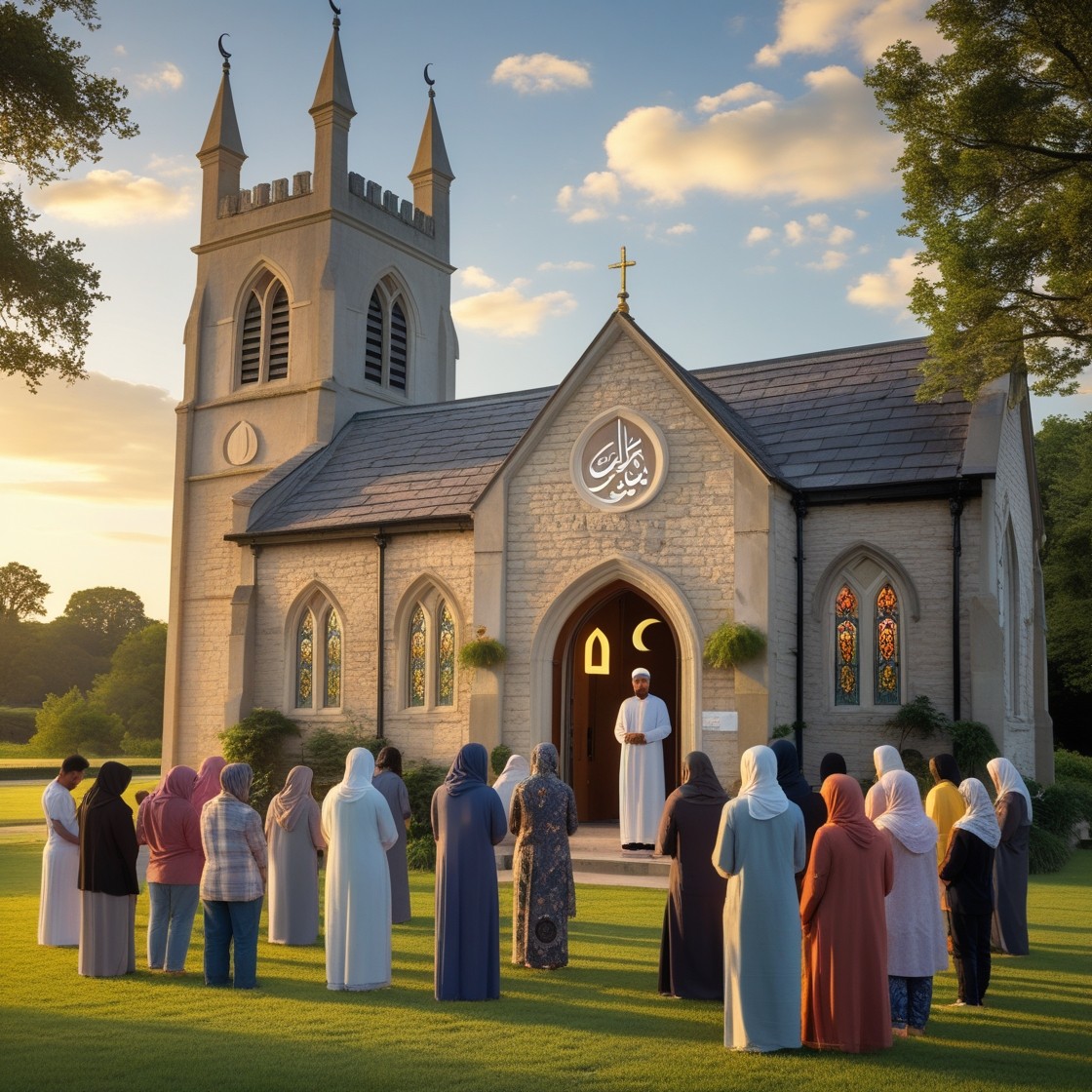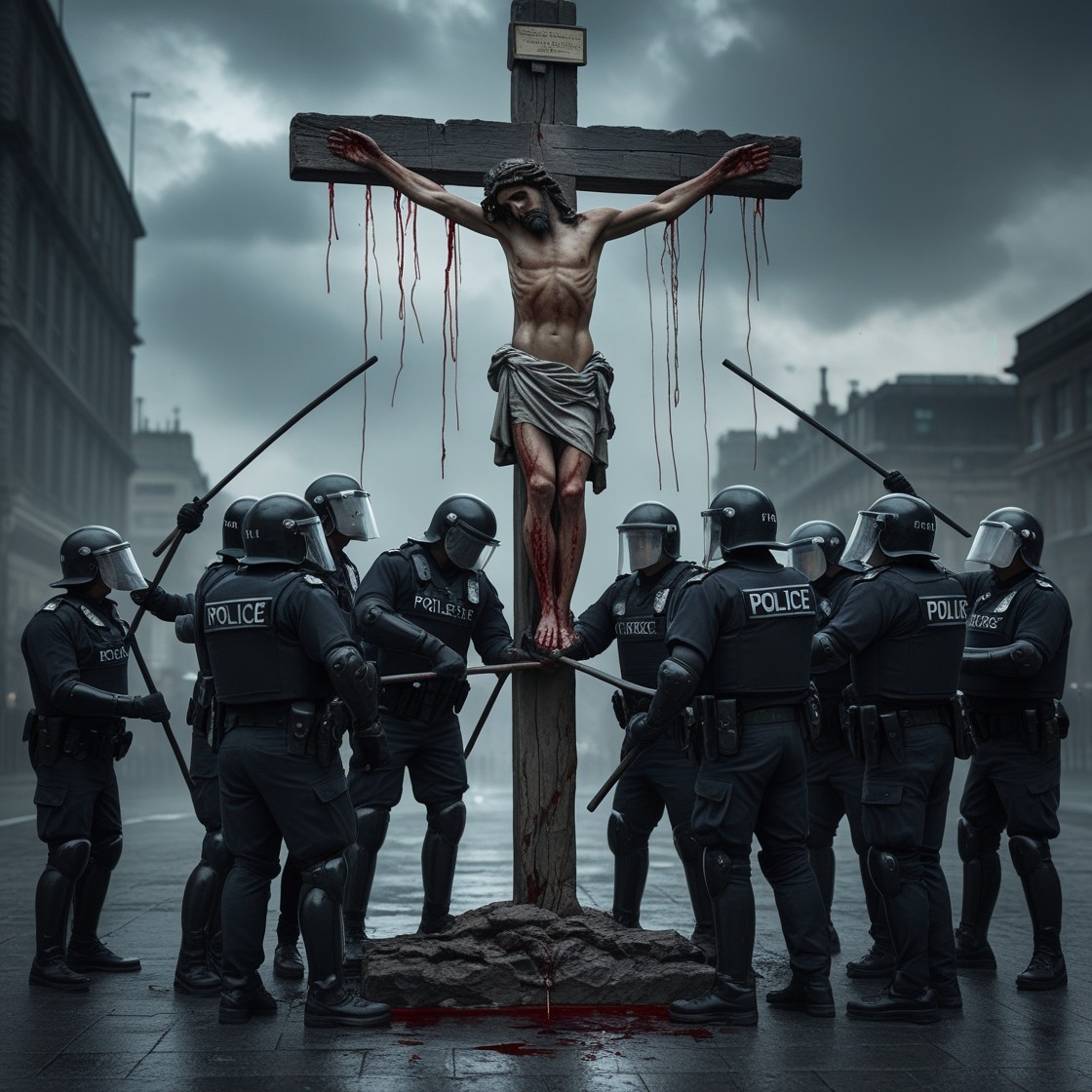
It is painfully obvious now that The Church, The State, The Media and The Monarchy have all decided that observances of the Christian Religion are no longer to be encouraged, made openly and to the forefront of daily life.
Other religions are celebrated and encouraged to be so visible. At the time of writing this, the Prime Minister has just posted on X his good wishes to Bengalis on the occasion of their New Year celebrations.
But no mention, it seems, of Christianity or any of its meaningful celebrations is to be acknowledged by our perfidious politicians. A new Archbishop of Canterbury has not yet been appointed, yet it is many weeks since Justin Welby stepped down from the post. Therefore, Easter will be without the premier Archbishop in Canterbury to observe the second most important event in the canonical year. The passion and renaissance of Christ.
So few of us seem to find this to be an unacceptable loss. Easter, for the majority, has simply become a “holiday” from the workaday world. A school headteacher recently even went so far as to cancel Easter for her pupils. Church attendances have fallen severely in recent times. Therefore, if schools cease to encourage observance of the Christian religion, in what was once primarily a Christian land, our children will no longer have the opportunity to learn about Christ or his teachings.
We must ask ourselves whether we are prepared be sanguine and accept without question the insertion of the Islamic faith in place of Christianity. Islam is no doubt, simply awaiting (even urging) the chance to fill the Christian void created by a State that has so readily and so treacherously, abandoned the tradition and faith of Christianity in Britain.
It was not always so. My childhood revolved around the regular celebrations of the Christian religion. School days began with assembly. A prayer and a hymn to begin the school day. Christmas and Easter were particularly important and were planned for well in advance every year.
I also went regularly to church with my Mother from a very early age. I remember the sombre tone of the Lenten services. The altar devoid of ornament and covered only with a dark unadorned cloth and a crucifix. On Palm Sunday, the arrival of Jesus in Jerusalem, we were always given a palm cross to take home after the service to be set up in a prominent place to remind us of the Holy Week to come. During Lent there was always a small cardboard box on the table at home into which we placed coins that would make up our oblation to the Church when Lent was over.
Good Friday always began with early service at Church. The replications of the Calvary were always created at the front of the Church by the Sunday School children in the week before Holy Week commenced. I have seen a particularly notable creation of this in the church where I recently attended a school Easter service. It had been carefully constructed with the three crosses and a tomb with the stone sealing it.
After Good Friday Church we always went to the local bakery to collect the “pre-ordered” hot cross buns and to the fishmonger for the fresh fish that would be our meal for that day. There was then no pre-Easter proliferation of hot cross buns in the supermarkets that became the norm
in future years. Shops closed at lunchtime.
This year I have particularly remarked the fact that the abundance of hot cross buns, usually available weeks in advance of the actual day, has been markedly absent! More evidence that the Christian Rites are being significantly downplayed!
In later years when we were the possessors of a television set, the BBC always televised a Good Friday religious film during the late morning and a service later in the day. The films I particularly remember seeing are The Robe and Ben Hur. In some years there was also screened a much longer film of the Story of Christ. Covering his life and teachings, leading his group of disciples. It was impossible not to be moved and awed by the message conveyed. The Sermon on the Mount was especially moving as soon afterward it led on to the trial and condemnation of Christ, culminating in his crucifixion.
The triumphal resurrection when the tomb was found to be opened and Christ was witnessed walking in the garden and the last time he showed himself to his disciples before ascending into heaven are all deeply moving parts of the life that Christianity celebrates.
Easter Sunday service saw a transformation of the Church. The restoration of the altar to its glory with celebratory golden cloth and branches of candles to illustrate the light of life and a profusion of flowers throughout the church. At this service the offertory boxes representing our acknowledgment of our sins and our sacrifices over the Lenten period, were presented as an apology and a declaration that we should try to do better in future.
The message from those Easter films is enduringly moving. But more moving still is the sense of awe that one receives when attending the services that bring Christ’s life and teachings so graphically to our attention. Nowhere in the teachings of Christ does any message appear that we should cause harm to any of our fellow men. Forgiveness is always the primary theme. After all, the real message of Easter is, that Christ gave up his own life upon that cross in order that the sins of mankind should be forgiven.
My Mother was able to recite in full The Sicilian’s Tale by Longfellow (I learned it too in my turn). It deals with a vain and arrogant King who thought he was invincible and upon hearing the Magnificat whilst in church for evensong one day, declared that no one could push him from his throne. What follows is the account of his humbling by an angel who took his place and caused him to become the court jester. On a visit to Rome during Holy Week, he finally receives his epiphany:
“In solemn state the Holy Week went by and Easter Sunday gleamed upon the sky
The presence of the angel with its light, before the sun rose made the city bright
And with new fervour filled the hearts of men who felt that Christ indeed had risen again
Even the jester on his bed of straw, with solemn eyes the unwonted splendour saw
And kneeling humbly on his chamber floor he heard the rushing garments of the Lord
Sweep through the silent air ascending heavenward.”
It makes it so particularly hard to bear that these modern and unthinking times have meant that an “alien religion” has been able to rise to such prominence and supplant the Christian faith that has been our guiding light for centuries. Not only has it been able to achieve prominence, but it has done so with the, seeming, approval of those whose responsibility it has formerly been, to assure the retention and freedom of worship of the Christian faith. Once our Church leaders and especially the Archbishops of Canterbury, would have been strong in their refusal to allow the faith that has guided the people of Britain for so long, to be so easily displaced. Yet displaced it has been.
Even the King, whose coronation Oath should have been to defend the faith, appears to have sidelined Christ in order to embrace the religion that, were it given the chance, will cause Christianity to be obliterated in this land. Other religions have managed to exist here side by side with Christianity. Sikhs, Hindus, Buddhists all coexist quite easily without overtly interfering with Christianity. It seems that Islam is unable to do the same and is actively seeking to impose its rule here to the exclusion of all others. If it succeeds, the Christmas and Easter representations of the Christian religion, along with the practice of Christianity itself, will be lost forever.
